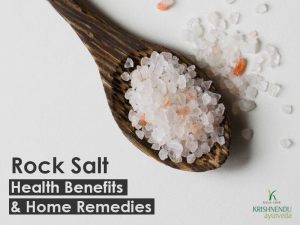Blog

How to Manage Slip Disc with Ayurveda
Slip disc or herniated disc is a condition affecting the intervertebral discs of the spine. It is one among the most common conditions affecting the spinal column, the others being degeneration, bulge and thinning of the disc. Also called as slipped disc, the problem presents with one disc sliding mildly out of its original position and applies pressure on the nerves arising out of the vertebral column. The pain associated with slip disc is due to the nerve root compression. Factors that lead to slip disc include trauma to the vertebral column which is caused by accidents or physical injury, strenuous jobs, hard physical labour, obesity, excessive strain and aging characterized by degeneration and loss of elasticity of the discs. Disc herniation can develop both suddenly and gradually over weeks or months. Symptoms associated with slip disc varies depending on the location of the herniation and according to the type of soft tissues involved. Symptoms of slip disc in the neck include, Pain in the neck, shoulders and arms Radiating pain that begins from the neck and reaches the fingers over a period of time Muscular weakness in hands Burning sensation in affected area Symptoms of slip disc in the back include, Pain and numbness in the back Pain that arises from the back and radiates to the legs Sharp pain when sitting or standing Muscle weakness in the back and legs Burning sensation Ayurvedic management of slip disc Ayurveda regards slips disc under the diseases caused by the vitiation of Vata dosha. Ayurvedic management of slip disc focuses on bringing back the aggravated Vata to balance and maintaining equilibrium in the body. Ayurvedic healing therapies for slip disc are beneficial for, Strengthening the supportive tissues that hold the spine Releasing muscular spasm and nerve compression Nourishing the joints by enhancing circulation and relieving pain. Following are the Ayurvedic therapies recommended for disc herniation. Kati Vasti – Process wherein warm medicated oils are made to retain in the lower back to treat conditions associated with the spine and lower back. Abhyanga – Ayurvedic massage using warm medicated oil




10 Simple Home Remedies for Relief from Bronchitis
Bronchitis is caused by the acute inflammation of the trachea and the bronchi of lungs which results in the accumulation and discharge of sputum or phlegm. Ayurveda defines bronchitis as when the aggravated Vata blocks Kapha present in the respiratory channels, it interrupts the movement of air and causes phlegm to accumulate in the lung tissue. The body reacts to this condition by coughing to expel the phlegm which results in bronchitis. The lead causes of bronchitis can be attributed to inhalation of dust and smoke, intake of foods that have a drying effect on the body, physical exertion, suppression of natural urges, etc. Simple home remedies to manage bronchitis. Honey and ginger – Seasonal bronchitis can be kept under check by having two teaspoons of fresh ginger juice mixed with an equal amount of honey twice daily. This will also reduce the intensity of the condition. Camphor and mustard oil – Warm 2 tablespoons of mustard oil and dissolve 2 grams of camphor in it. Apply this mixture gently all over the chest, neck and back without massaging. Leave it for a few minutes and give dry fomentation for relief. Turmeric and milk – Boil a glass of milk with a teaspoon of turmeric powder. Drink this milk twice or thrice daily to soothe the condition. Ginger and black pepper – To a cup of boiling water, add a teaspoon of ginger powder and black pepper. Mix in honey and drink the mixture twice daily. Steam – Inhaling steam is beneficial to help loosen the secretions in the lungs. Adding a few drops of eucalyptus oil to the hot water will help soften the mucus that has been obstructing the airways. Sesame seeds – The medicinal properties of sesame seeds help relieve chest congestion associated with bronchitis. Add half a teaspoon of sesame seed powder to two tablespoons of water and have the mixture twice daily. Epsom salt bath – When suffering from acute bronchitis symptoms, epsom salt can provide relief. Add a few tablespoons of epsom salt to bathing water and soak in it for half an hour. Salt water gargle – Add a teaspoon of salt water to a glass of warm water and gargle with it several times a day to soothe the throat inflammation and to cut through the mucus that is causing irritation to the throat. Herbal tea – Add half a teaspoon each of ginger powder, cinnamon powder and cloves powder to a cup of hot water and mix well. Drinking this tea will help relieve the condition due to the therapeutic properties of the herbs.




Rock Salt – Health Benefits and Home Remedies
Rock salt is considered the purest form of salt – raw and unprocessed and free form chemicals. A favourite substitute for common salt during religious fasting rituals, rock salt is also a healthy replacement for table salt in cooking. Formed when salt water in large water bodies in inland areas is evaporated by sunlight, rock salt is a rich source of trace elements like potassium, iron, calcium, zinc, magnesium, etc. which are vital for health. Ayurveda regards rock salt as a sattvic food which help nurture the spirit and also a cooling spice. Its cold potency and light and unctuous qualities is hailed as beneficial in balancing Pitta dosha, while also being tridoshic in balancing other doshas as well. Health benefits of rock salt Below listed are some of the health benefits offered by rock salt when included in daily diet. Improves digestion – A laxative in nature, rock salt promotes healthy digestion and aids appetite. It is also beneficial for reducing gas and acidity and for soothing heartburn. Replacing common salt with rock salt in cooking will help reduce digestive issues significantly. Reduces blood pressure – The rich potassium content in rock salt help stabilize blood pressure while also ensuring heart health. Boosts metabolism – It boosts metabolism and stimulates a healthy metabolic rate which helps maintain the ideal weight. It also aids in weight loss by equalizing the minerals which inhibit cravings. Home remedies using rock salt Respiratory infections – Gargling warm water mixed with rock salt is beneficial for relieving throat pain and inflammation whopping cough and tonsils. Sinus and asthma can also be managed with rock salt water as it helps reduce inflammation of the respiratory organs. Pain relief – From joint aches to pains associated with arthritis, rock salt helps relieve pain in different parts of the body. Drinking warm water mixed with rock salt will provide relief from muscle cramps and reduces inflammation in the body. Deworming – Taking rock salt along with lemon juice help eliminate stomach worms and also controls vomiting. Relief against influenza is another added benefit. Oral care – One of the most common ingredient used for oral hygiene since centuries, rock salt is also hailed as a mouth freshener and a teeth whitener. Using warm water that has rock dissolved in it helps reduce gum inflammation and soothes pain in the tooth cavity. Skin care – The cleansing and detoxifying properties make rock salt an ideal ingredient for skin care. When used as a bath scrub, it can exfoliate the dead skin cells and cleanse the skin. Rock salt is also useful for removing yellowness under the nails. Hair care – Rock salt can be used as a hair cleanser to remove dead skin from the scalp without reducing the natural oil secreted by the scalp. Washing hair using shampoo mixed with rock salt will help strengthen hair and add volume.




Quick Home Remedies for Relief from Kidney Stone
The function of kidneys are to eliminate waste products and excess fluids from our body through urine. They are also vital for maintaining the chemical balance of our bodies. When the kidneys are unable to process and throw out waste, it leads to the formation of kidney stones by the crystallisation of chemicals and minerals in the urine. Smaller stones may pass through the urine but larger stones when untreated could cause unbearable pain. Here are some simple and quick home remedies for relief from kidney stones. Water – Drinking lots of water helps keep the body hydrated and also eliminates minerals and toxins that cause stones. Look for a light and clear colour in your urine to ensure that you are drinking enough water for your kidney health. Coconut water – Along with being a health drink, coconut water is also beneficial for treating kidney stones as it helps break and flush out the stones while also relieving the burning sensation during urination. Lemon juice with honey or black salt – Drinking lemon juice mixed with warm or plain water is effective for kidney stones. While adding honey or sugar makes it healthy, mixing rock salt or black salt is said to help flush out kidney stones. Apple – Being prone to oxidation, apples are effective in the dissolution of kidney stones. Extract juice from red apples and drink it fresh without any other added ingredients to prevent formation of stones. Pomegranate – Pomegranate seeds and its juice are considered effective remedies for kidney stones as they are rich in antioxidants. Eating pomegranate seeds or drinking its juice regularly can help keep the kidneys healthy. Basil – Basil helps promote balance in fluid, mineral and uric acid in the kidneys. Drinking basil tea or its juice with honey few times a day will help eliminate stones from the urinary tract. Steep 5 to 6 six basil leaves in hot water for 10 minutes, strain and add a teaspoon of honey for making the basil tea. Chewing 2 or 3 basil leaves daily morning or drinking basil juice extracted by crushing leaves and pressing them through a sieve are also helpful. Watermelon – It helps maintain the acid levels in urine. High in water content and potassium, watermelon also helps cleanse the kidneys and flush out the stones. Eating it raw or drinking its juice or making watermelon seeds tea by steeping the seeds in hot water are considered beneficial too. Tomato Juice – Having fresh pressed tomato juice with a pinch of salt and pepper every morning is believed to dissolve mineral salt deposits in the kidney which in turn prevents and relieves kidney stones. Grapes – Grapes are considered good therapy for kidney stones because of their diuretic Eaten them raw or drinking grape juice is helpful to alleviate problems associated with kidney stones. Hot compresses and baths – Hot compresses and hot baths will help relieve discomfort and pain due to kidney stones.




Best Pranayama to Practice for Each Body Type
Pranayama involves the conscious awareness of breath and is considered an integral part of yoga. Revered as the life force that energizes as well as relaxes the body and mind, practicing Pranayama is highly beneficial to balance the system and bring harmony. And when practicing specific breathing techniques according to one’s body type or the predominant dosha, it is considered to oppose the qualities of the aggravated dosha and maintains optimal health. Pranayama for Vata – Nadi Shodhana Nadi shodhana or the alternate nasal breathing is a technique that possess soothing, rhythmic and grounding qualities which is beneficial for opposing the cold, dry and rough properties of Vata dosha. It is also ideal for releasing physical tension and to reduce stress, anxiety and nervousness. Steps to practice Nadi Shodhana Sit comfortably on a flat surface and close your eyes. Close the right nostril with the right thumb and start inhaling gently with the left nostril. Then close the left nostril with the right ring finger, lift the thumb from the right nostril and exhale through it. Continue breathing with alternate nostrils in a rhythmic pace. Pranayama for Pitta – Sheetali Pranayama Sheetali Pranayama, also called as the cooling breath opposes Pitta dosha which is made up of fire and water. The technique calms and cools down the heating effects of Pitta, especially when it is aggravated in the summer season. Sheethali is also considered beneficial when feeling angry, irritated, frustrated or experiencing acid digestion. Steps to practice Sheethali Pranayama Sit comfortably with an erect spine on a flat surface. Rest your hands on your lap with open palms on your lap. Close your eyes. Curl your tongue and take a refreshing breath through it. Close the lips. With the tip of your tongue lightly touch the roof of your mouth. Exhale through your nose. Repeat inhaling through the curled tongue and exhaling through the nose. Pranayama for Kapha – Bhastrika Pranayama Bhastrika pranayama or bellows breath help stimulate the warmth in the body to reduce the heavy, sticky and oily qualities of Kapha. It also increases the flow of Prana through the Nadis or the body’s energy channels. Bhastrika is also recommended for relief from congested lungs and to brighten up the mind against demotivation and lethargy. Steps to practice Bhastrika Pranayama Sit comfortably with an erect spine and palms flat on your lap Close your eyes and relax the jaw and facial muscles. Inhale deeply through the nose and flare the ribs open. Exhale fully and deflate the lungs. Continue this for 20-30 seconds and return to normal breathing.




Yogasanas Recommended for Healthy Digestion
Ayurveda regards the root cause of all disorders to be poor digestion. The digestive fire or Agni should be strong for effective metabolism and thus to promote overall health. The practice of yoga is considered beneficial for kindling the digestive fire as well as to boost metabolism. Here is how yoga can effectively improve digestion. Stimulates the digestive fire and increases the appetite When the yogasanas stretch the body, it massages the abdominal muscles which enhances the functioning of digestive tract. Relieves constipation and regulates bowel movement Promotes blood circulation to the digestive organs thus improves digestion Detoxifies the body and thus prevents indigestion caused by accumulated toxins. Following are the yogasanas recommended for healthy digestion. Adho Mukha Svanasana – Also called as downward facing dog pose, this yogasana enables to take deep breaths into the belly which ion exhaling nourishes the intestines. Parivrtta Trikonasana – This revolved triangle pose involves compressing and releasing the colon which stimulate the elimination of accumulated toxins in the body. Naukasana – The boat pose strengthens the abdominal muscles and stimulates the intestines which promotes digestion by boosting the secretion of digestive juices. Pavanmuktasana – The wind-relieving pose strengthens the abdominal muscles and prevents gastrointestinal problems. Ustrasana – Camel pose stretches the abdomen, stomach and intestines while also providing relief from constipation. Paschimottasana – When bending forward while seated, a compression occurs on the belly which massages the abdominal muscles. The pose also relieves constipation and provides relief from flatulence. Ardha Matsyendrasana – The half spinal twist cleanses the digestive system while also helping to improve liver and pancreatic health.

